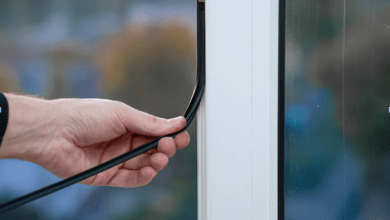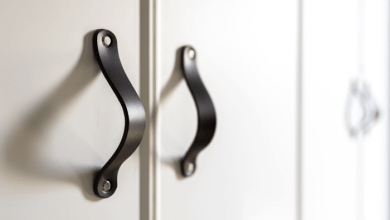
Water damage is one of the most common and costly issues homeowners face. Left unchecked, it can wreak havoc on your property and lead to expensive repairs. The good news? With the right preventative strategies, you can protect your home from water-related damage and ensure it remains safe and sound for years to come. Below, we’ll explore practical ways to prevent water damage, focusing on areas such as drainage, roof care, and landscaping.
Protect Your Home with Proper Drainage
Effective drainage systems direct water away from your home’s foundation, preventing structural instability and flooding. To avoid water pooling around your property, implement these steps:
Inspect and Clean Gutters Regularly
Gutters are key to managing rainwater. If they’re clogged, water will spill over and collect near your home’s foundation. Clean your gutters at least twice a year and ensure downspouts direct water at least five feet away from your home. For homeowners investing in rain gutter installation in Salt Lake City, choosing durable materials like aluminum or galvanized steel can further improve water flow and protect against local weather conditions.
Maintain Grading Around the Foundation
The ground around your home should slope away from the foundation. Over time, soil can settle, creating low spots where water collects. Add soil and compact it to maintain a grading slope of at least 6 inches over 10 feet.
Use a French Drain or Dry Well
If your property has trouble with standing water, consider installing drainage solutions such as French drains or dry wells. These systems help redirect surface water to other locations and reduce the risk of saturation near your home.
Keep Your Roof in Excellent Condition
The roof is your first line of defense against water damage. A damaged or neglected roof can leak, causing harm to your ceilings, walls, and furniture. Implement the following maintenance practices to keep your roof in peak condition:
Schedule Routine Roof Inspections
Have a professional check your roof annually to spot issues such as missing shingles, damaged flashing, or weak spots. Addressing problems early will save you money and prevent extensive damage.
Replace Aging Materials
Roofing materials degrade over time. If your roof is over 20 years old or showing significant signs of wear and tear, consider replacing it. Opting for high-quality, water-resistant materials like metal or asphalt shingles further strengthens your home’s defenses.
Clear Debris from Roof Valleys and Gutters
Debris buildup can trap moisture and lead to rot or leaks. After heavy storms or during fall, clear leaves and dirt from roof valleys and gutters to promote effective water flow.
Plan Water-Controlled Landscaping
Landscaping doesn’t just enhance curb appeal, but it also plays a significant role in directing water away from your home. By focusing on smart planting strategies and grading, you can prevent water from pooling in unwanted areas.
Choose Native Plants and Shrubs
Native plants are well-suited for your local climate and can help manage soil erosion while absorbing excess water. Plant these strategically to create natural barriers against water runoff.
Install Mulch Beds
Adding mulch to garden beds prevents soil displacement during rainfall. Organic mulch, in particular, absorbs moisture and allows water to infiltrate the ground.
Place Trees Strategically
Plant trees with large canopies a safe distance from your home. Their roots are excellent at stabilizing soil and absorbing groundwater, but could damage foundations if placed too close.
Prevent Indoor Water Damage
While much of the focus is on exterior water prevention, maintaining your home’s interior is equally crucial. Here’s how to stay ahead of potential indoor water issues:
Inspect Plumbing Systems
Leaky pipes and faulty plumbing fixtures are leading causes of water damage inside homes. Regularly inspect for drips, condensation, or corrosion around faucets, toilets, and exposed pipes.
Install a Sump Pump
Basements are particularly prone to flooding. A sump pump ensures that excess water in these areas is redirected away from your home, protecting against costly water damage.
Seal Windows and Doors
Inspect window and door seals for cracks or gaps. Replace old caulking and use weather stripping to prevent water from seeping inside during storms.
Take Proactive Steps Today
Water damage is avoidable with proper planning and preventative maintenance. By addressing drainage, maintaining your roof, and optimizing your landscaping, you can protect your home from costly water-related issues. Simple steps like regular inspections, timely repairs, and smart installations ensure your property remains secure through every season. Make water prevention a priority now to enjoy a dry, damage-free home for years to come.



